What A Real Train System Looks Like
December 27, 2009
For most Americans, the only image they have of passenger rail systems, and subways in particular, are Amtrak, the New York Metro, the San Francisco BART, and maybe some of that sorry crap in Chicago.
Not a very inspiring bunch.
However, most of the rest of the developed world has quite wonderful subways and trains. They are clean, efficient, cheap, run on time, have as many as 20 or even 25 trains an hour (one every three minutes) during peak periods, and everybody from all income levels uses them. This is not a utopian fantasy, it is normal life for most people — which they take for granted along with other modern conveniences like clean running water and working sewage systems.
If you haven’t used a real subway, that runs at least ten trains an hour all day, on time, then you probably don’t know what it’s like. It is like electricity. It’s just there, and it works. At ten trains an hour, there is a train every six minutes. You don’t have to look at a schedule, you just show up and, within an average of three minutes, you get on the train.
Here are some shots of nicer subway stations from around the world:

T-Centralen Station, Stockholm.
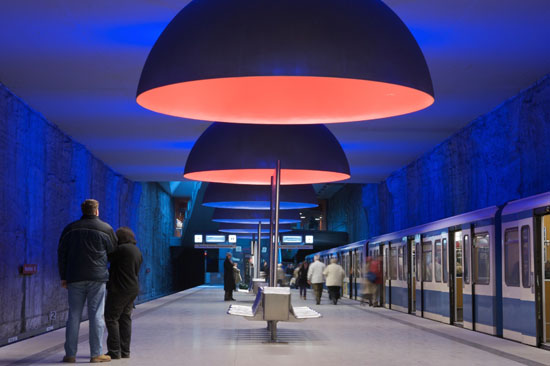
Westfriedhof Station, Stockholm.
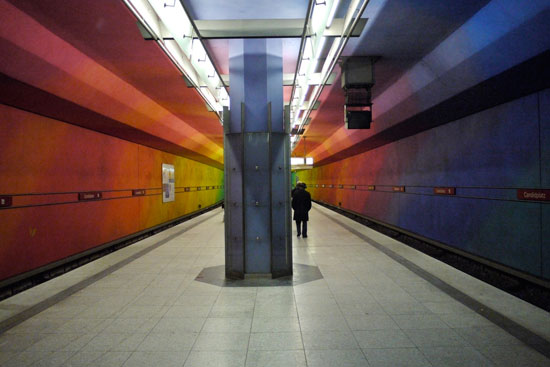
Candidplatz Station, Munich.
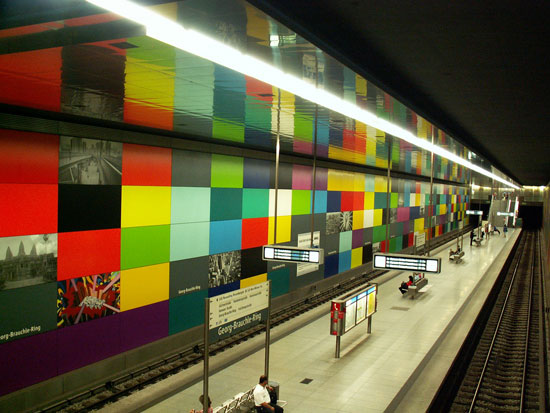
Georg-Brauchle Ring Station, Munich.
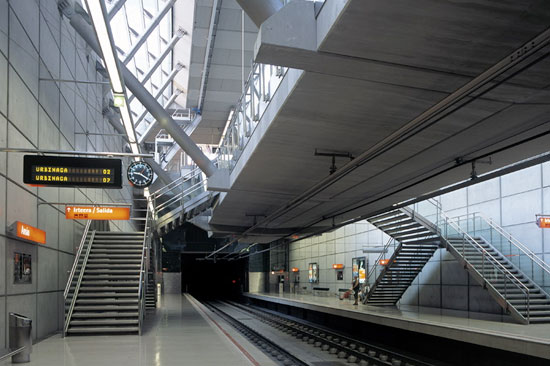
Bilbao Metro.
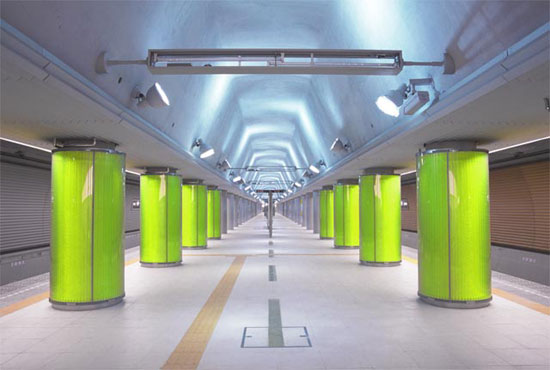
Iidabashi Station, Tokyo.
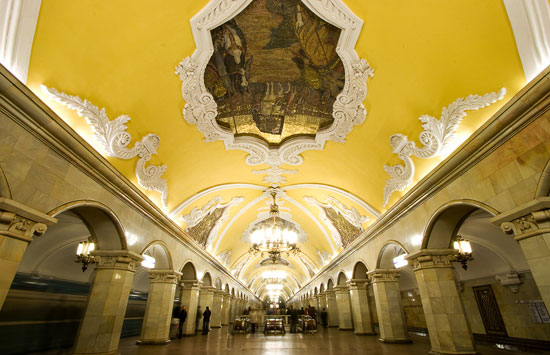
Komsomolskaya Station, Moscow.
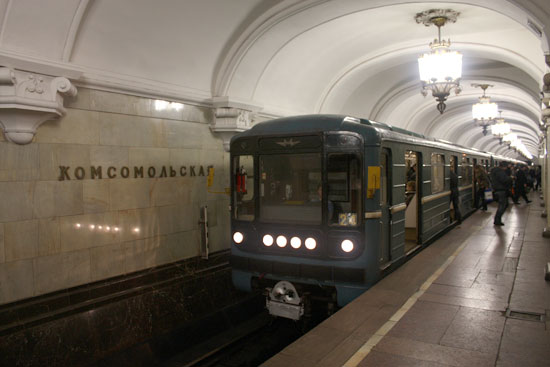
Komsomolskaya Station, Moscow.
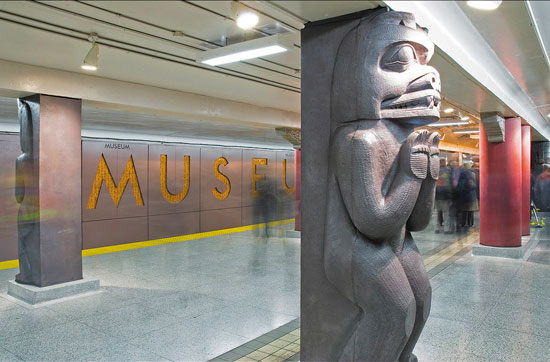
Museum Station, Toronto.
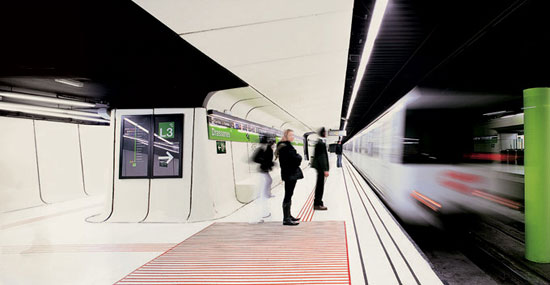
Drassanes Station, Barcelona.
I like Komsomolskaya Station best, followed by Iidabashi Station.
However, subways are not really something to fetishize about. It should just work, like the plumbing. It is not necessary to be so decorative. Just clean and functional is fine — unlike New York Metro subways, which are dirty and dysfunctional, and about as much fun as dirty and dysfunctional plumbing. The real advantage of good subways is not that we can oooh and ahhh about the station decor, but rather that it gets us to Point B efficiently, and enables us to live in a Traditional City without a car. In other words, a subway allows us to have a really fabulous destination, and a fabulous lifestyle in many ways.
Trains and Traditional Cities go together. You can’t have one without the other. You can try, but you will fail. A train system in Suburban Hell is almost useless, because you have to drive to and from the train station. A Traditional City without a train is impossible, because you will need lots and lots of parking. (Exceptions can be made for small towns near a train station, where you can literally walk everywhere in town, and which could be served by a bus that goes to the station.)
Bicycles, electric cars, scooters, Segways, whatever: not gonna work. You can have these things in addition to a good train system, but not as an alternative. What you’ll find out is that, if the train system is good, you don’t need all this other stuff anyway.
These days, it’s easy to make subway systems because we have amazing tunneling machines, which will bore a train-sized hole like a giant rock-eating worm.

So, no excuses.
Now, let’s add some high-speed rail. This is the way to get from one subway/city train system to another, within about a 500 mile radius.

The original 1960s “bullet train” (the Japanese name is the “New Trunk Line” or shinkansen).
Things have moved on a bit since then.

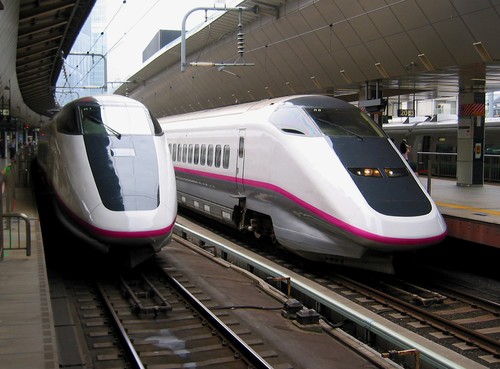
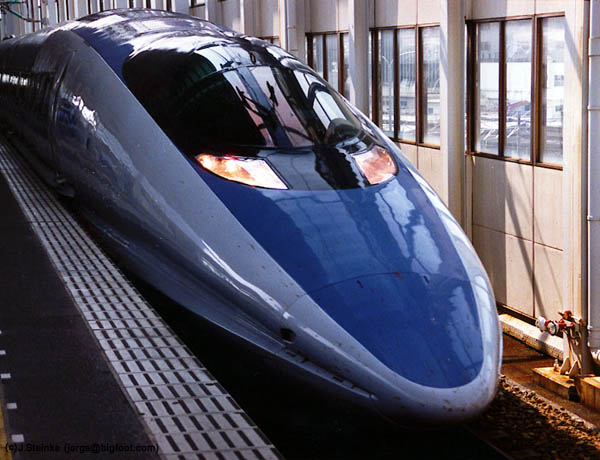
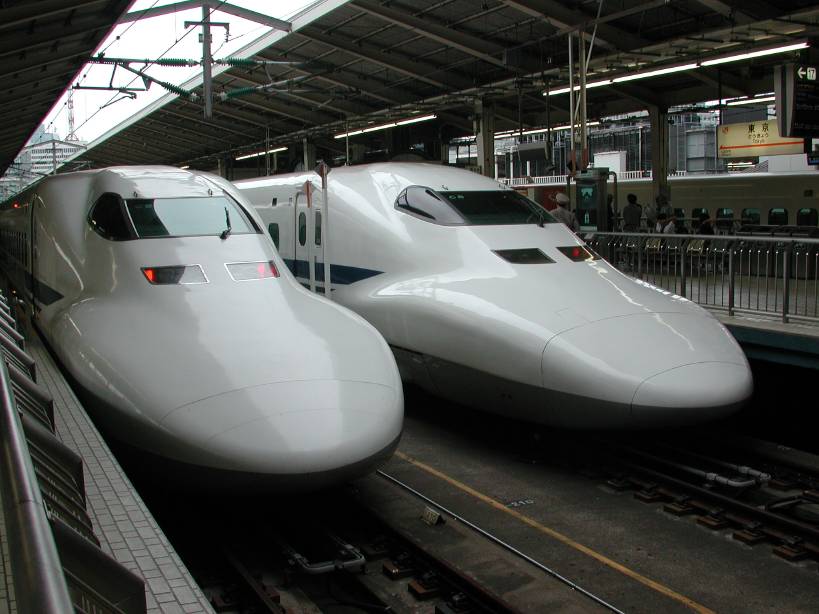
IF
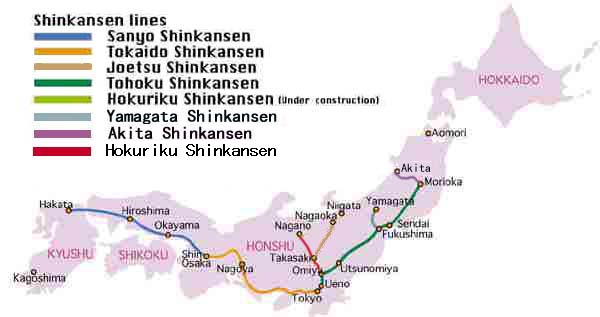
Pretty much all the major cities outside of Hokkaido are covered.
There is of course a regular normal-speed train system as well, which covers the smaller cities and towns.
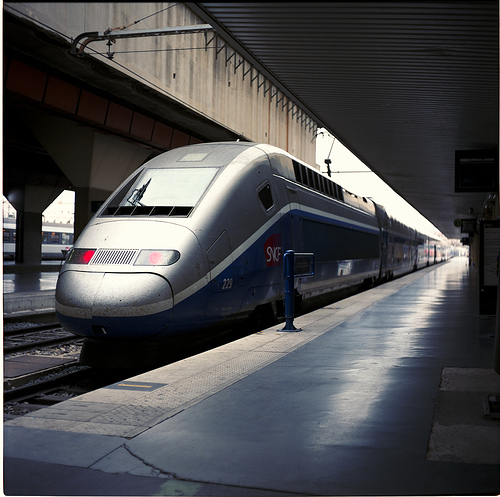
The French TGVs are not quite so sexy, but still do the trick.
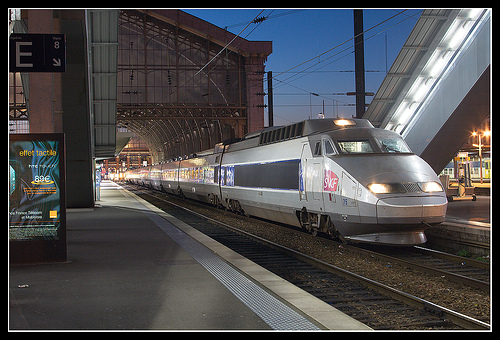
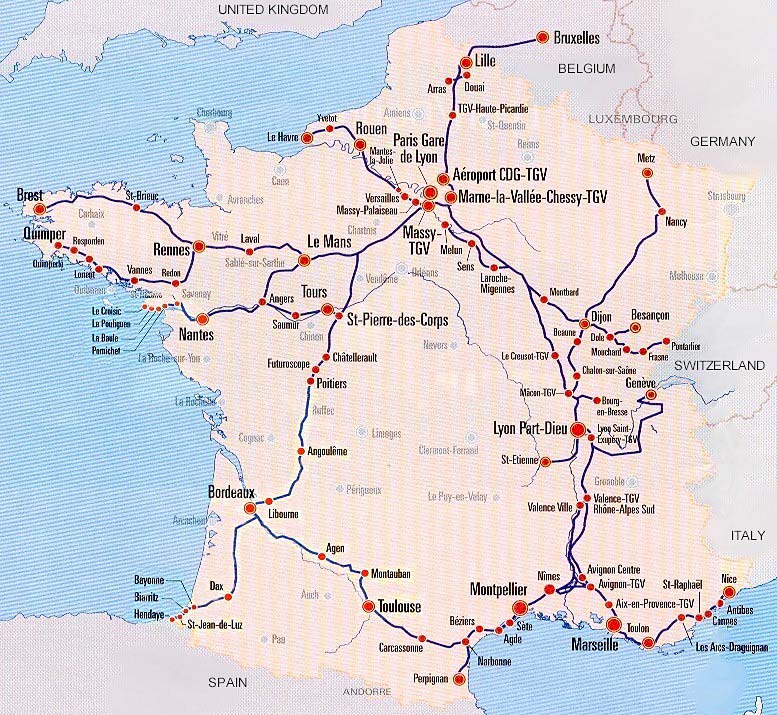
This is the map of France’s TGV system. You can get about anywhere you want to go at 200+ kph.
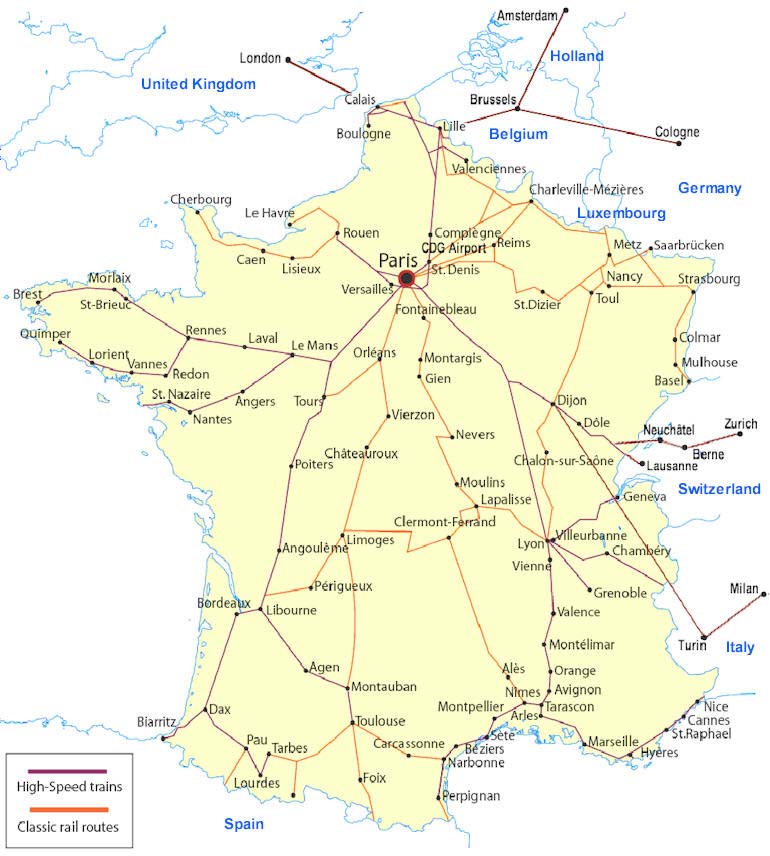
This train map of France includes the regular-speed trains as well.
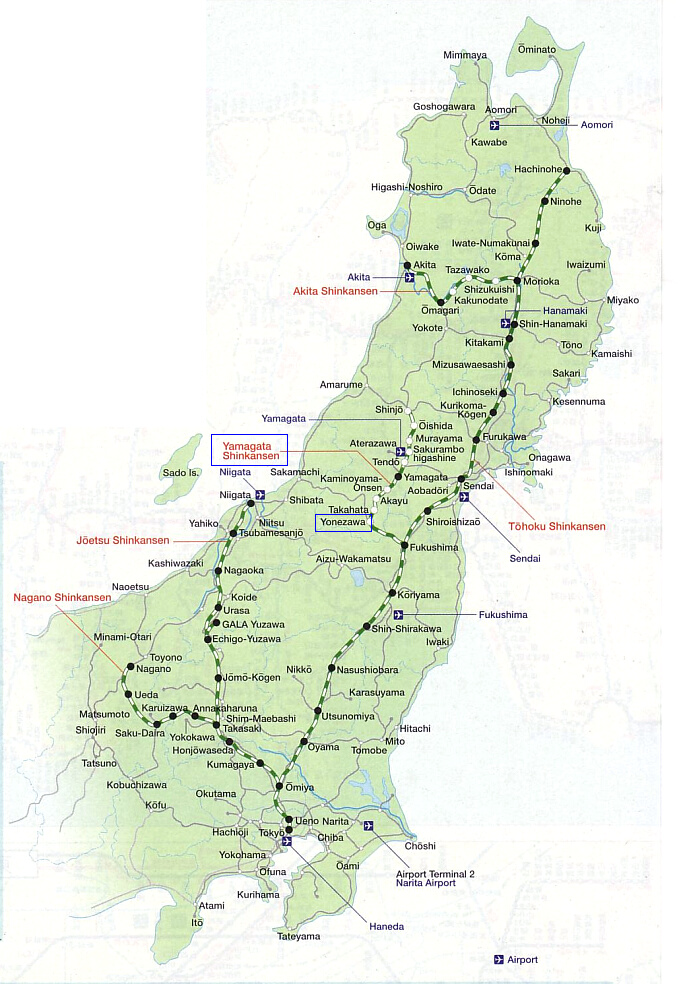
This is a map of train lines in the JR East system, which covers the eastern half of Japan. The shinkansen (high speed) trains are the green-and-white lines.
The small grey lines are not roads, they are regular intercity train lines, each with many, many stations which could not all fit in this map.
This train system is all electric. You can run it on nuclear, hydropower, solar, wind, coal, natural gas, biomass or whatever.
This area is extremely mountainous. The large blank areas represent mountain ranges.
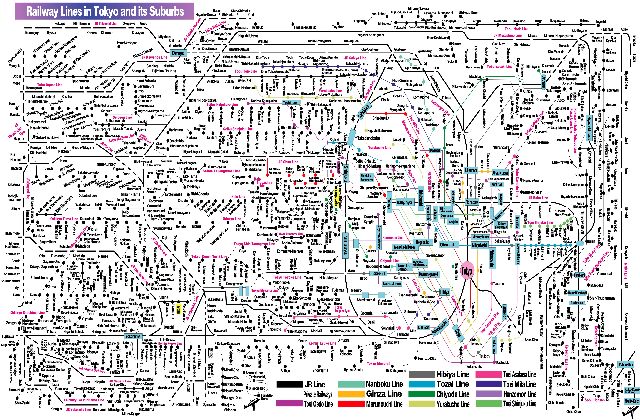
This is a map of all the trains in the greater Tokyo area. I’ve shown it before. Click on it for the full-size image.
When a new window opens, you will have to click again to see it at 100% size.
Since this map was made, a few more train lines have been added. Also, this is a “schematic” map. Where there are a bunch of train stations that are “close together,” that doesn’t mean they are physically close together. It was something they did to fit it all in one map.
As you can see, you can get to and from about anywhere via the train. One reason for this is that — naturally — all the important stuff is near the train station. If you are a business or store, you want to be where it is easy for your workers and customers to get to. Residences too are better off when they are within a 15 minute walk of the station.
Sometimes you run into discussions on the Internet and elsewhere about how wonderful the Washington DC subway is, and how this should be a model for the future. These people also like to talk about Portland, Oregon a lot. This is so pathetic I don’t know what to say. It is like watching people bang on pots with spoons and talk about what great music they are making. If you run into these people, please ignore them completely. Not only are they utterly lost, they also seem to have no capacity for learning. If you have read this far, you already know more than they do.
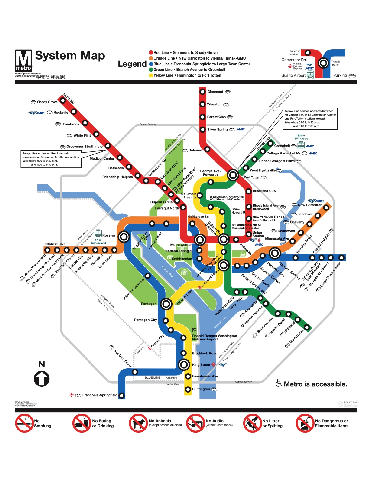
This is the train map for Washington DC. As you can see, it is an irrelevant little fart of a train system.
It is much better than nothing at all. But, it is hardly a good representation of what is possible. Getting excited about this is like getting excited about someone who stops pooping in their own pants and learns how to use a toilet. Which is fine for a three-year-old, but not so much for someone with a graduate degree in Urban Studies, which most of these people have.
I should mention also the normal-speed, above-ground train lines that are the bread and butter of a real train system, once you get out of the central urban area which is served by a subway.
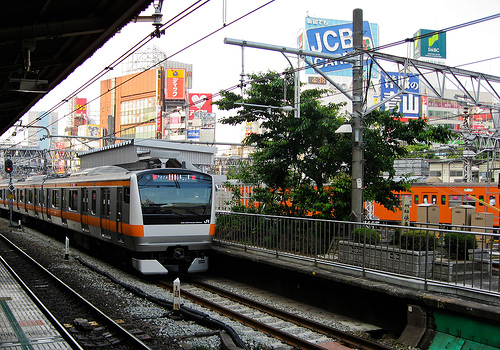
The familiar orange cars of the Chuo Line, Tokyo. One of Japan’s oldest train lines, along with the Tokaido Line.
Not very sexy, but it is clean, on time, runs a zillion trains a day, and works great. Like your plumbing system. It does exactly what it is supposed to with no problems whatsoever.
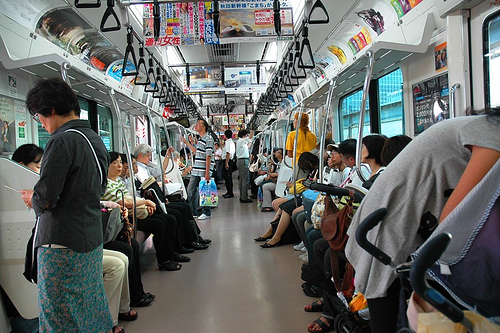
Nice train with nice people.
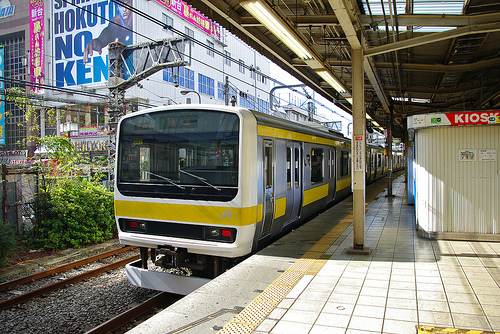
Platform of a typical station.
So, now we have all the elements of a proper train system — the kind of system that you can ride all over the country, and never once wish you had a car instead. Once you have a system like this, cars become completely unnecessary.
The next element in our train system is the proper integration of the train within the city. This is another point at which the typical U.S. solution is a total disaster.
The typical U.S. solution is to surround the train station with acres and acres of free parking.
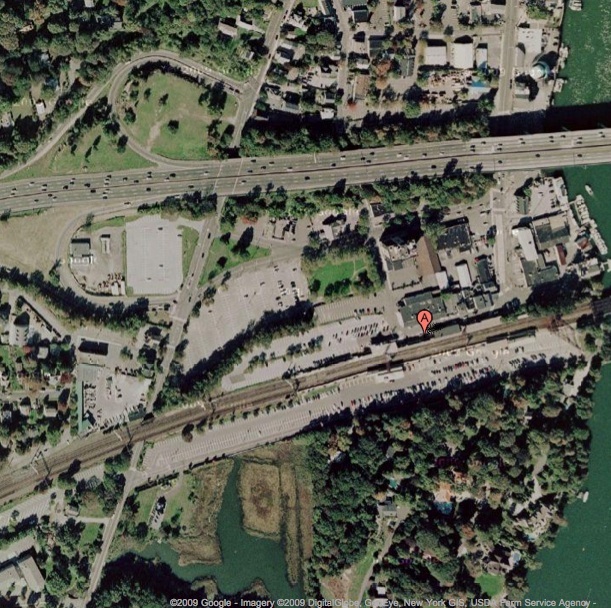
This is Westport Station on the New Haven line, east of New York City. My old train station. This photo is about 800 meters across.
See the free parking everywhere? (In this case, it’s not actually free.)
Even if you did work up the courage to cross that burning plain of asphalt, there isn’t anything to walk to. Obviously, you need a car.
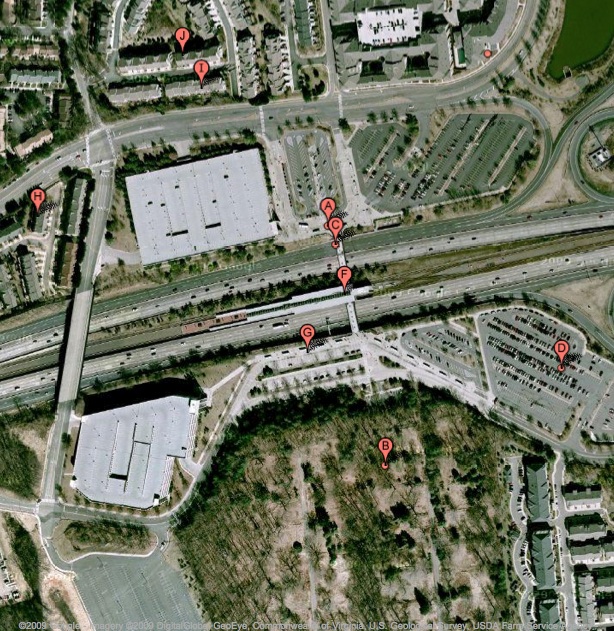
This is the Vienna/Fairfax-GMU station, part of the Washington DC train system. This photo is 800 meters across.
It is a perfect example of WHAT NOT TO DO. The train station is in the middle of the interstate, and surrounded by square miles of parking and Green Space and mega-roadways. There is no Place to go to. The first thing you think when you step off the train is: “Damn, I need a car!”
October 10, 2009: Place and Non-Place
There are 157 acres of land in this photo. When you step off the train, you have immediate walking access to 157 acres of nothing. There’s no There there!
The better solution — assuming that we are aiming to create Traditional Cities, where we can live without owning a car, or at the very least, have only one car which is used every other weekend — is to surround the station with all the highest-value property. A common Japanese solution is to put the supermarket right inside the train station. That way, you can do your shopping right after work, with no fuss whatsover. All the best offices, stores and restaurants are as close to the train station as possible, so we can walk there from the station, and where there is the most pedestrian traffic. Plus, you also try to put as many apartment buildings there as you can, so you can easily walk to the station in less than ten minutes. So, in front of the station, there might be a little bus stop, dropoff point and taxi stand, and perhaps a little bike parking lot, but little or no automobile parking. The larger train stations often have full-size department stores also right inside the station.
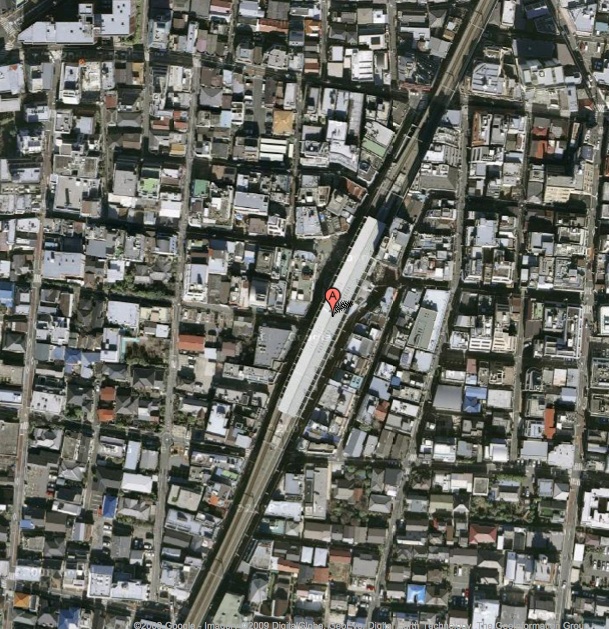
This is Gakugei Daigaku Station, on the Toyoko Line, which runs southwest out of Tokyo and ends up in Yokohama (thus “To-Yoko”). I used to live near here.
This photo is about 400 meters across, or about a 200m radius from the station. What you see here is all within about a three minute walk from the station. This is a really nice neighborhood, with an immense amount of fun stuff going on.
First, notice that there is no parking. There is some bike parking, and also some bus stops. Look at the enormous amount of stuff that is within a three-minute walk of the station! It is, as a Traditional City should be, 100% Places.

This is the Vienna/Fairfax station again, near Washington DC. This is the same scale, about 400 meters across. You can see that there is absolutely nothing you can walk to in this area, except your car. (The buildings you see are parking garages.)
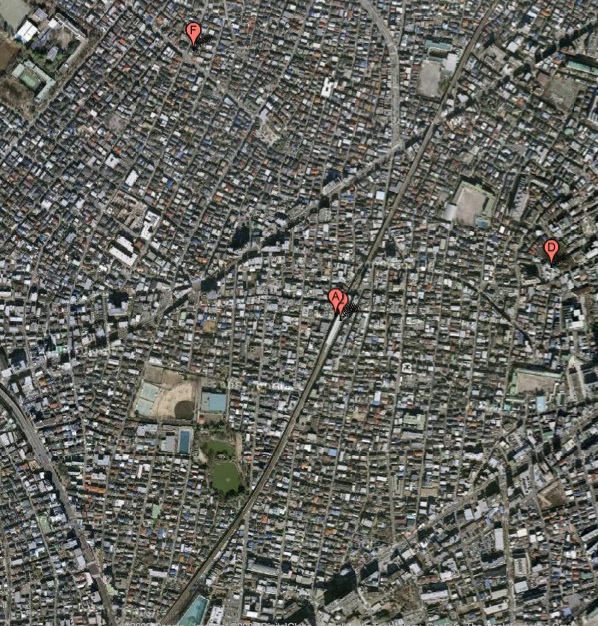
This is Gakugei Daigaku station again (the “A” mark), but we have pulled back a bit. The photo is now about 1500 meters across, or about a 750 meter (about half a mile) radius from the station. You could walk from the station to anywhere in this photo in ten minutes. We can see that there is now an utterly colossal amount of stuff that we can access with only a ten-minute walk. This photo covers about one square mile, or 640 acres.
Looks like grey mush, like a Traditional City should! Generally speaking, the more grey-mushy it is, the better it is.
Admittedly, I am cheating a bit here to make a point. Gakugei Daigaku is not a distant exurb like Westport, it is more comparable to a Brooklyn neighborhood like Park Slope. However, the difference with New York is that in this example, you arrive in a fabulous Traditional City, while Brooklyn is a dysfunctional 19th Century Hypertrophic City. That is a different point to make, and I’ll get to it eventually.
Nevertheless, the original point stands: if you want people to be able to live without automobiles, you have to make it easy to get from the train station to wherever you want to go on foot. This means you put all the good stuff right up against the train station — even build it into the train station itself if possible. When you step out of the train station, you want to land right in a wonderful pedestrian Traditional City environment, not a parking lot wasteland.
In short, you want to pair your train system with Traditional City design. They go together like peanut butter and jelly.
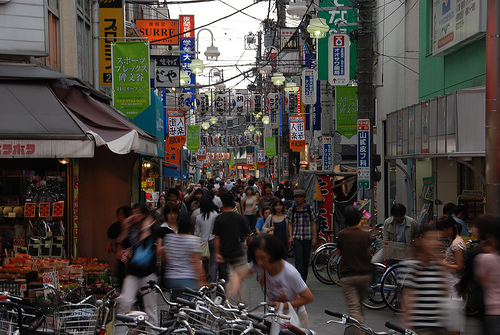
The view when you step out of Gakugei Daigaku station. Doesn’t that look like more fun than 157 acres of asphalt and Green Space?
It is!

If the Gakugei Daigaku area looks like too much of a hugger-mugger for you, maybe a more sedate European example is more your thing. Hey, it’s up to you to design the pedestrian Traditional City of your dreams. You be the big boss! This street from Vienna certainly looks more dignified, but the Gakugei Daigaku area is more fun (trust me). Actually, when you get out of the commercial area near the train station, there are lots of stately houses and apartments on quiet streets in the Gakugei Daigaku area too. So you can have it both ways; you can live on a quiet little street, and then walk three minutes to the hubbub around the station.
If you go to a Japanese automobile exurb, you will also find that there are some parking lots around the train station, and it is not so easy to walk. The result is much the same as Westport, though typically not nearly so bad. This serves merely as another example of how not to do it. There are Japanese automobile suburbs too, and they stink in pretty much the same way as automobile suburbs anywhere else. However, in the Japanese case, there is an alternative: you could live in a place like the Gakugei Daigaku area. That’s why vehicle sales have plummeted over the past few years: from a peak of 7.1 million units in 1996, they have declined steadily to 4.25 million estimated for 2009. That’s a hefty 40% drop in only twelve years.
Wouldn’t it be wonderful if they continued to fall, to perhaps 2.0 million or less? Giving up cars voluntarily!
That’s about all you need to know about trains and Traditional Cities. As you can see, it is really quite easy to solve the problem of car dependency, and all of the other catastrophes of Suburban Hell, if you know what you are doing.
Plus, we also solved our oil dependency, and reduced our energy and resource use by probably 80%, without even thinking about it. It costs less — because we aren’t supporting an enormous amount of automobile infrastructure — and we’re having way more fun too. This stuff is a cinch.
April 19, 2009: Let’s Kick Around the “Sustainability” Types
Other comments in this series:
December 13, 2009: Life Without Cars: 2009 Edition
November 22, 2009: What Comes After Heroic Materialism?
November 15, 2009: Let’s Kick Around Carfree.com
November 8, 2009: The Future Stinks
October 18, 2009: Let’s Take Another Trip to Venice
October 10, 2009: Place and Non-Place
September 28, 2009: Let’s Take a Trip to Barcelona
September 20, 2009: The Problem of Scarcity 2: It’s All In Your Head
September 13, 2009: The Problem of Scarcity
July 26, 2009: Let’s Take a Trip to an American Village 3: How the Suburbs Came to Be
July 19, 2009: Let’s Take a Trip to an American Village 2: Downtown
July 12, 2009: Let’s Take a Trip to an American Village
May 3, 2009: A Bazillion Windmills
April 19, 2009: Let’s Kick Around the “Sustainability” Types
March 3, 2009: Let’s Visit Some More Villages
February 15, 2009: Let’s Take a Trip to the French Village
February 1, 2009: Let’s Take a Trip to the English Village
January 25, 2009: How to Buy Gold on the Comex (scroll down)
January 4, 2009: Currency Management for Little Countries (scroll down)
December 28, 2008: Currencies are Causes, not Effects (scroll down)
December 21, 2008: Life Without Cars
August 10, 2008: Visions of Future Cities
July 20, 2008: The Traditional City vs. the “Radiant City”
December 2, 2007: Let’s Take a Trip to Tokyo
October 7, 2007: Let’s Take a Trip to Venice
June 17, 2007: Recipe for Florence
July 9, 2007: No Growth Economics
March 26, 2006: The Eco-Metropolis

